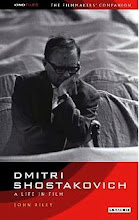
A quick note on the Saturday's Stockhausen Prom.
Perhaps there'll never be 6,000 people ready to fill the RAH for two-and-a-bit hours of Stockhausen, but those who didn't go missed a real event. I don't know how it came over on the radio but it's not really something I can imagine in anything other than the flesh.
From the 1950s onwards Stockhausen was an undeniable leader of the avant-garde - his pupils and assistants form a roll-call of modern composers in a surprising variety of styles. But then, in the 1960s he began also to influence popular music,
 and famously appeared wedged between Lenny Bruce and WC Fields on the cover of Sgt Pepper (back row, fifth from the left). Frank Zappa, Pink Floyd and Bjork are among his admirers.
and famously appeared wedged between Lenny Bruce and WC Fields on the cover of Sgt Pepper (back row, fifth from the left). Frank Zappa, Pink Floyd and Bjork are among his admirers.In 1977 he began a quarter of a century of work on his seven-day opera-cycle Licht, for which he envisaged a new concert hall being built, but which also included the infamous string quartet in which the four performers are linked only by headphones, as each plays in their own helicopter. Perhaps Prince Harry would like to sponsor a performance?
Where he saw such outlandish demands as simply necessary, a general mood-shift against avant-garde 'pretensions' saw a megalomanic attempt to out-Wagner Wagner. Stockhausen began increasingly to work with a group of close collaborators including Kathinka Pasveer and Bryan Wolf, who controlled the sound-projection in this Prom.
All this helped move him towards the apparent periphery. Or perhaps he was simply a victim of fashion and an embarrassment at his earnest honesty, to which art responded with post-modernist irony.
Probably he didn't help things with his claims to have been born on Sirius, though his website describes his death as his "ASCENSION through the HEAVEN'S DOOR into PARADISE", a slightly more conventional pantheistic-cum-Christian view of our fates.
But you can't fault his sense of mission. One of modern music's difficulties is that people hardly have a chance to hear it more than once - premieres are easy: it's the second performances and recordings that are elusive. But Stockhausen released his own series of (91 and counting) CDs, alongside scores, books and any amount of explanatory material.
And he seems to have retained his sense of humour.
But, back to the RAH...
Gruppen, Stockhausen's mid-1950s masterpiece employs three orchestras: half way through writing it, he realised that no single conductor could cope with the three independent but interlinked time layers, so he simply split the orchestra and demanded three conductors. For all its revolutionariness, nobody who's at home with Webern and Schönberg would need to stretch their ears very much, but the most exciting things is the hocketing of melodies (yes - it does have them!) and timbres around the three groups. I was a bit worried that the barn-like RAH would meld it all into a single mush or produce some other weird effect (I remember a Nielsen Fifth where the side-drummer's apocalyptic climax was literally doubled by an echo). Thankfully, at the back of the hall in the circle the three groups were clearly separated though it wasn't quite the surround-sound that Stockhausen intended. Part of the joy is trying (and knowing it's impossible) to imagine what it sounds like from other places: with two orchestras taking up a good chunk of the arena, I can imagine that standing between the marimba and the cellos (or whatever) would have been very strange.
After that, the lights were dimmed for Cosmic Pulses, an electronic piece from the thirteenth hour of Klang, a series to be played over a 24-hour period. Like anything by Stockhausen, there's a rigorous plan (permutations of pitches, rhythms and spacial placement) but, on a first hearing (this was the UK premiere), that seemed less important than simply enjoying the sounds bouncing around the hall. At 32 minutes, perhaps it was a bit too much of a good thing but still recognisably way beyond a lot of electronic music's "...and-I-can-do-this-as-well..." noodlings.
Klang's fifth hour is marked by Harmonien for amplified and sound-projected solo trumpet. This incredible virtuoso piece didn't stay a moment too long as Marco Blaauw juggled a belt-load of mutes to create a completely gripping 15 minutes.
 The second half began with another classic: Kontakte, for electronic sounds, piano and percussion. There's not much to say, except to exhort people to hear it, but again, the live experience is something different as we watched the interplay of Colin Currie on percussion and Nicolas Hodges, credited only as pianist but who also did a share of the percussing.
The second half began with another classic: Kontakte, for electronic sounds, piano and percussion. There's not much to say, except to exhort people to hear it, but again, the live experience is something different as we watched the interplay of Colin Currie on percussion and Nicolas Hodges, credited only as pianist but who also did a share of the percussing.We'd taken the opportunity of a thinly populated circle to slither round to the side, above the first orchestra, for a different perspective on the repeat of Gruppen. It certainly proved how different sound perspectives worked though it sounded better from the first position; the spacial effects weren't as strong from the side. Thankfully, the second outing wasn't spoiled as the first had been by a moronic show-off, intent on demonstrating that he knew this piece so well that he could start applauding even before the last note's dying fall.
Finally a hearty clap on the back for Martyn Brabbins, who replaced Ludovic Morlot to conduct Gruppen's second orchestra. Quite how one steps in at the last minute in a work like this is beyond me!

No comments:
Post a Comment